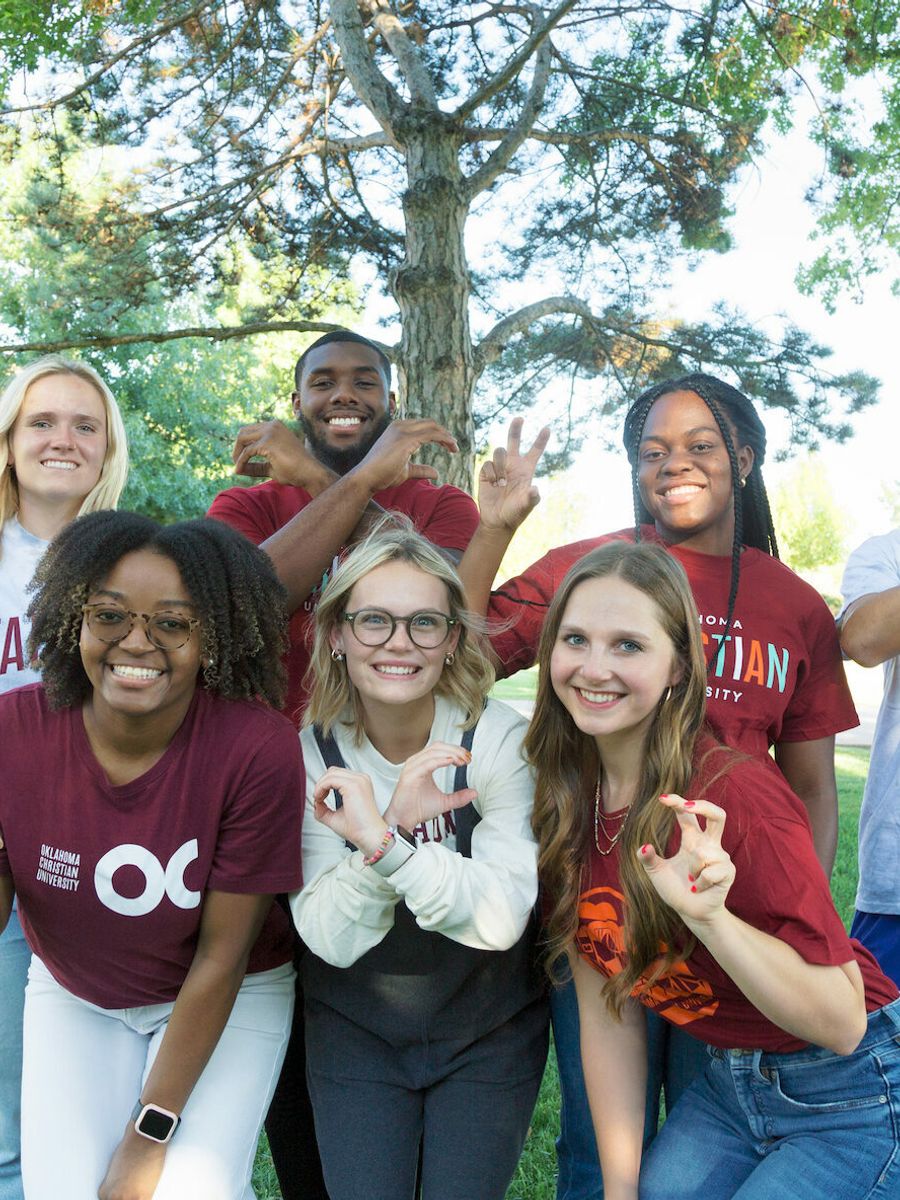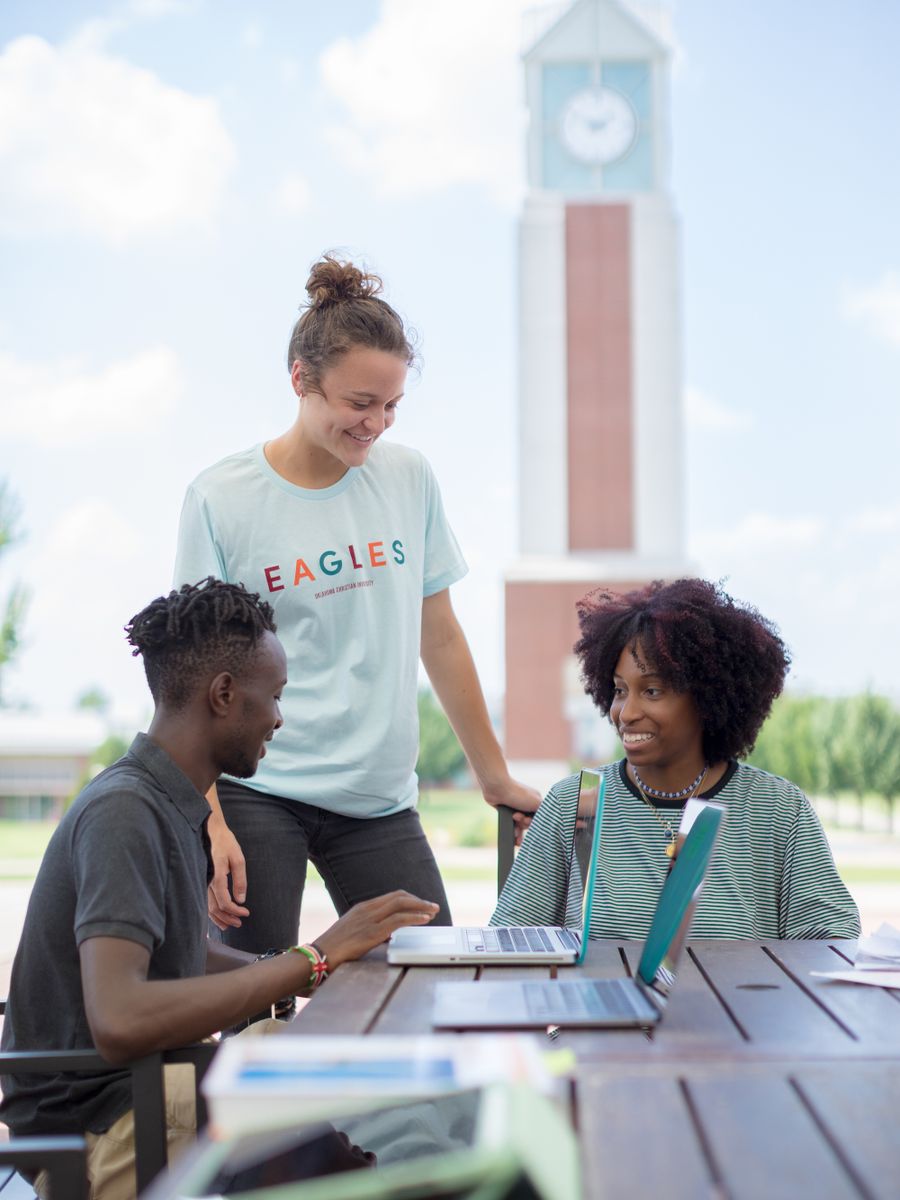COVID-19 Plan for Academics
“On one occasion an expert in the law stood up to test Jesus. 'Teacher, what must I do to inherit eternal life?' he asked. 'What is written in the Law?' Jesus replied.
He answered, ‘Love the Lord your God with all your heart and with all your soul and with all your strength and with all your mind; and, Love your neighbor as yourself.’ ” -Luke 10: 25-27
Oklahoma Christian University is a faith fueled, Christ-centered institution. OC’s response to the COVID-19 pandemic then, like its response to all crises, will lean into that faith by appealing to individuals to respond in community with “one another” top of mind.
“Love Your Neighbor” will be OC’s mantra collectively and individually as we take the adopted, necessary steps to keep our community safe.
The complete Roadmap to Readiness for Students and Parents
COVID-19 Plan for Student Life
ACADEMIC PLAN
Professors will work with their leadership to identify the modality that would best suit their course(s), whether fully in-person; fully online (asynchronous); remote (online but with a set, synchronous meeting pattern); or blended as flex model. If courses involve an in-person component, faculty will identify how they’ll accomplish remote instruction, achieve physical distancing and accommodate students who will miss class because of illness or quarantine. Classes that are meeting in-person will be assigned a classroom that will accommodate the physical distancing requirements.
OFFICE HOURS
Faculty will maintain office hours. These office hours can be in-person, phone or virtual (eg. Collaborate, Zoom, Google Meet). Masks should be worn and social distancing protocols should be followed.
FACULTY, MASKS AND PREVENTION
The university will require face coverings to be worn in classrooms across campus as part of our effort to prevent the spread of COVID-19. Masks will be provided to all faculty, staff and students. A professor is permitted to lecture without a mask while maintaining a distance of at least 10 feet from all students. Faculty will be aware of special accommodations needed by students: lip reading, transcripts, hearing impaired, vision, etc. (There are several technology options available to assist).
- Sharing of items that are difficult to clean and disinfect is discouraged.
- Avoid sharing electronic devices, books, pens and other learning aids. Electronic submission of assignments is advised.
- Avoid use of turning in assignments in paper format. Use electronic methods for assignments when possible to reduce risk of germ transmission.
EXCUSED ABSENCE POLICIES FOR STUDENTS
- Faculty will examine and revise policies for excused absences and virtual learning.
- Faculty will consult with the OC COVID-19 Clinical Officer related to specific students’ needs or timing of a student’s return to the classroom.
SCIENCE LAB PREVENTION OF COVID-19
The following is a compilation of the current best practices for preventing COVID-19 exposure in the science laboratories of Oklahoma Christian University (OC), as promulgated by the Centers for Disease Control and Prevention (CDC)1, the Occupational Safety and Health Administration (OSHA)2, the American Industrial Hygiene Association (AIHA)3 and Corning Life Sciences4. Engineering controls are preferred first to prevent exposure, but if they are not available or are not feasible, then administrative controls are implemented. The use of safe work practices and cloth face masks are the third line of defense against COVID-19. Keep in mind that these best practices are subject to change as new information about the spread of COVID-19 becomes known.
ENGINEERING CONTROLS
Ventilation—Ensure there is adequate flow of fresh air to the lab spaces by maximizing fresh air through the ventilation system.
Workstations—Use lab tape to mark off workstation locations on the lab benches so they provide 6 feet of distancing in all directions. If workstations cannot be arranged to accommodate physical distancing of at least 6 feet and the number of students cannot be reduced in the space, use physical dividers between workstations that are made of transparent, fire-resistant material.3
ADMINISTRATIVE CONTROLS
In order to maintain proper distancing of 6 feet between individuals in the lab, it may be necessary to limit the time in the lab or limit the number of students in a lab. Consider a hybrid approach of introducing the lab online and allowing in-person labs with a reduced number of attendees.3
To prevent close contact between students, if feasible, limit the use of lab partners. Attempt to have each student perform lab experiments without assigning a lab partner, adjusting the lab experiment if necessary.
Create schedules for shared equipment, such as the use of analytical equipment in Lab 206 in Vose Hall.3
USE OF SAFE WORK PRACTICES
Each lab will be adequately and continuously stocked with disinfectant supplies, hand sanitizer, hand soap and paper towels.
Encourage frequent hand washing for everyone in the lab.
Hand sanitizer that has at least 60% alcohol should be used after handling any non-disinfected object, such as an automatic pipette previously handled by someone else.3
Avoid sharing personal protective equipment (PPE), such as safety glasses, splash goggles and face shields.3
Be aware of where others are in the lab, and keep as much distance as possible. Limit movements throughout the lab to essential trips.4 Limit movement of students inside and outside the lab.2
After each lab exercise, each student will wipe down their own lab bench and/or hood area using the provided disinfectant supplies. After each lab exercise, the teaching assistant, lab manager or instructor will wipe down all common areas and equipment used in the lab or any adjoining lab areas or stockrooms. The housekeeping staff will clean and disinfect hallways and restrooms on a routine basis, but at least twice a day when labs are in session. Wear personal protective equipment when using disinfectants, which can include disposable nonsterile gloves, lab coat/gown and eye protection.2
REFERENCES
- Centers for Disease Control and Prevention (CDC). “Considerations for Institutions of Higher Education”. Assessed on July 15, 2020, from https://www.cdc.gov/coronavirus/2019-ncov/community/colleges-universities/considerations.html.
- U. S. Department of Labor, Occupational Safety and Health Administration (OSHA). “COVID-19—Control and Prevention—Laboratory Workers and Employers”. Assessed on July 14, 2020, from https://www.osha.gov/SLTC/covid-19/laboratory.html.
- American Industrial Hygiene Association (AIHA). “Reopening: Guidance for Institutions of Higher Education”, Guidance Document, Version 2, June 30, 2020. Assessed on July 15, 2020, from https://aiha-assets.sfo2.digitaloceanspaces.com/AIHA/resources/Reopening-Guidance-for-Institutions-of-Higher-Education_GuidanceDocument.pdf'.
- Corning Life Sciences. “Tips for Lab Safety During a Pandemic”. Assessed on July 14, 2020, from https://www.corning.com/worldwide/en/products/life-sciences/resources/stories/at-the-bench/the-rules-for-lab-safety-during-a-pandemic.html.

